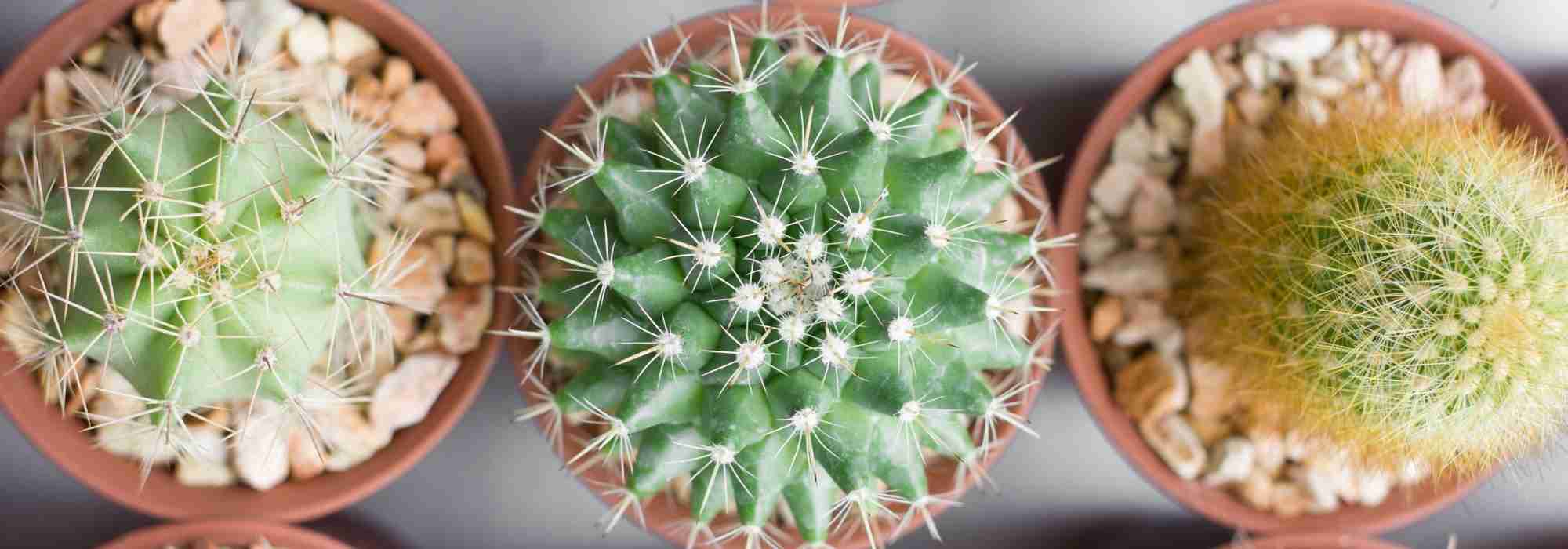
Is your cactus turning yellow? Discover the causes and solutions
Discover the causes of cactus yellowing and how to remedy them
Contents
Robust, resilient, self-sufficient, almost indestructible plants… That’s the reputation indoor cacti have. Yet, it sometimes happens that a cactus turns yellow for no apparent reason, gradually or suddenly, in a very localised or diffuse manner. This yellowing often hides an imbalance in growing conditions. But what kind of imbalance? Is it a sign of disease or a watering issue? Or simply an exhausted substrate? Understanding the cause of the yellowing will help save your cactus.
Discover how to identify the different causes of cactus yellowing, so you can implement the most suitable solutions.
Inappropriate watering?
In its natural habitat, most often desert or arid, a cactus is subjected to irregular rainfall. This is why it has developed ways to survive in harsh conditions. However, it still needs to replenish its reserves. The yellowing of part of the cactus is often linked to a watering issue. Contrary to popular belief, yellowing foliage is not always due to overwatering; a lack of water can also be the culprit.
Too Much Water or Not Enough
Overwatering is particularly harmful: the roots of cacti, which are shallow and fine, can quickly suffocate in constantly damp soil. This causes water stress: the plant yellows because it can no longer absorb water properly. This type of yellowing is often accompanied by a softening of the base or gradual blackening, a sign of rot.
Conversely, a cactus may yellow when deprived of water for too long during active growth periods in spring and summer. In this case, the yellowing is usually diffuse, and the plant appears weakened, shrivelled, or even wilted. 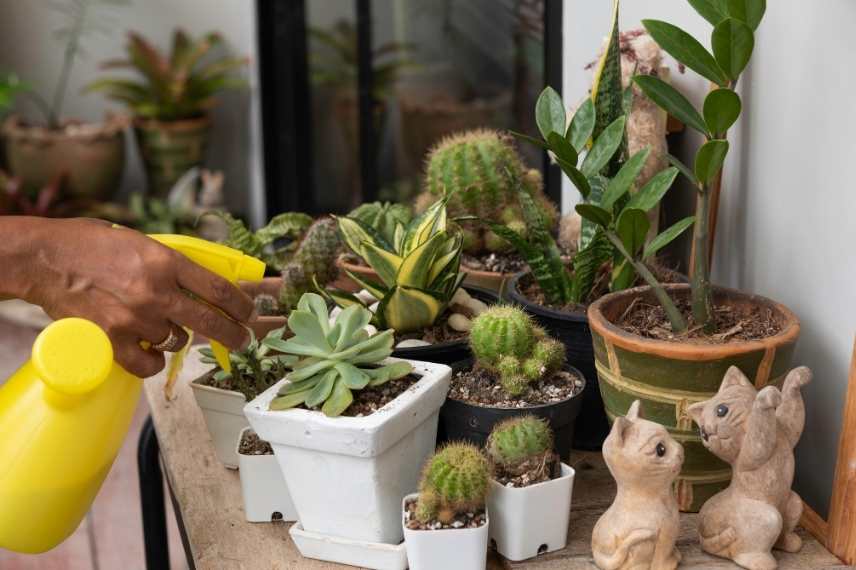
What to Do?
- Water only when the soil is completely dry, even deep down. Insert a finger into the soil to check.
- During the growth period, adopt a generous but infrequent watering routine: let the water drain fully through the drainage holes, then remove any residual water from the saucer or decorative pot.
- In winter, almost completely stop watering. Watering once a month is sufficient.
- If overwatering is suspected, remove the plant from its pot, inspect the roots, trim away any rotten parts, let it dry out for a few days in the open air, then repot in dry soil.
Read also
How to plant a cactus in a pot?A problem with light or direct sunlight?
Even though cacti are plants native to arid regions, this doesn’t mean they can tolerate all exposures without issue.
Too much or too little light
Localised yellowing, often on the upper part or the south-facing side of the plant, can be a sign of sunburn. This frequently occurs in spring or early summer when the light suddenly becomes more intense, especially if the cactus has been overwintered indoors or in a shaded greenhouse.
The chlorophyll tissue can then degrade under the effect of UV rays, causing discolouration ranging from yellow to white, or even brownish if the tissues are burnt. This phenomenon particularly affects species with thin or light-coloured skin, such as Astrophytum or certain Echinopsis, but it can affect any type of poorly acclimatised cactus.
Conversely, a cactus grown in a room with little light will become etiolated. Its epidermis may discolour and take on a yellowish hue. 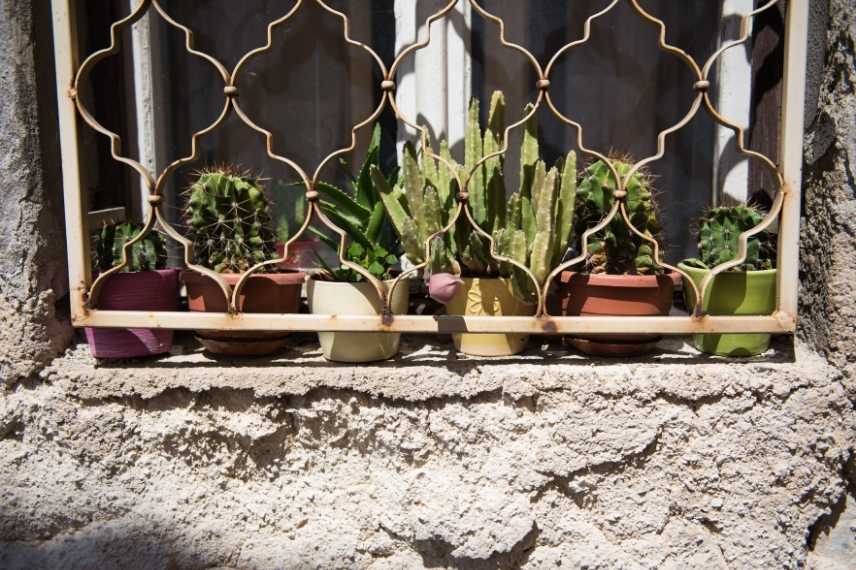
What to do?
- If your cactus is coming out of winter storage or has been in a low-light area, gradually move the plant to a brighter spot. It’s essential to avoid sudden light shocks.
- If your cactus is placed near a window, filter the light with a sheer curtain, or position it behind an east or west-facing window rather than a south-facing one.
- In late spring and summer, cacti enjoy being placed outdoors. It’s best to acclimatise them slowly over several days, increasing their sun exposure hour by hour.
An unsuitable substrate?
An unsuitable substrate is a sneaky but common cause of yellowing in cacti.
Problems related to poor substrate
Too often, plants are grown in universal composts, rich in organic matter, designed for fast-growing indoor plants. This substrate does not meet the needs of cacti, which are undemanding plants.
This inappropriate substrate can have several consequences that explain the yellowing. It retains too much water and promotes root suffocation, it is not sufficiently draining, and air does not circulate around the roots, causing them to rot. Alternatively, it accumulates mineral salts or lime in regions with hard water.
These growing conditions deprive the plant of the oxygen its roots need, which not only causes yellowing but also slows growth, or even the decline of the cactus.
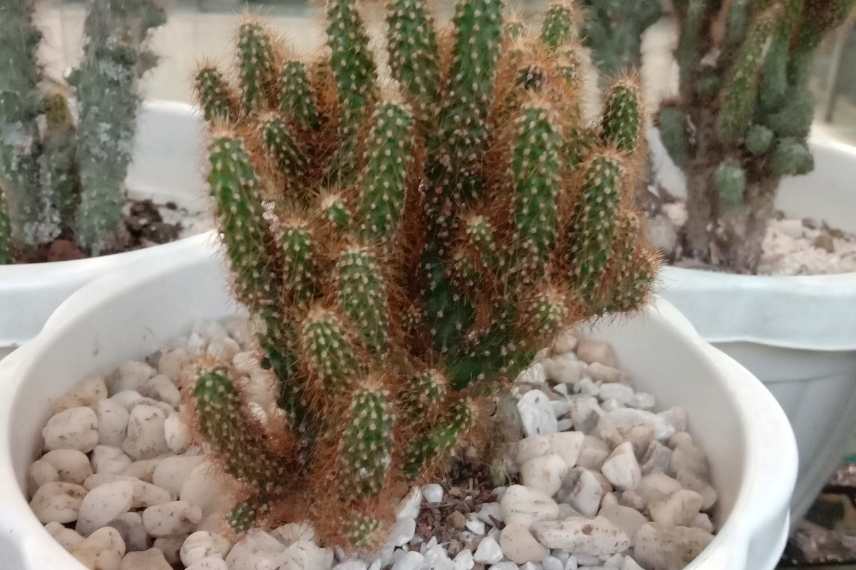
What to do?
Clearly, in this type of situation, the cactus needs urgent repotting:
- Choose a pot with a drainage hole.
- Use a special cacti substrate, perfectly draining and low in organic matter. You can also create a mix with 1/3 garden soil, 1/3 compost, and 1/3 coarse sand (or gravel or pumice or perlite).
- Place a layer of clay pebbles or coarse gravel at the bottom of the pot.
Parasitic?
When a cactus turns yellow abnormally, especially if this yellowing is accompanied by other symptoms (spots, deformations, wilting), it’s time to inspect the plant closely.
Common Parasites
Mealybugs, root aphids, or red spider mites can be the cause of a cactus turning yellow. Sometimes hard to detect, they contribute to the discolouration of the epidermis.
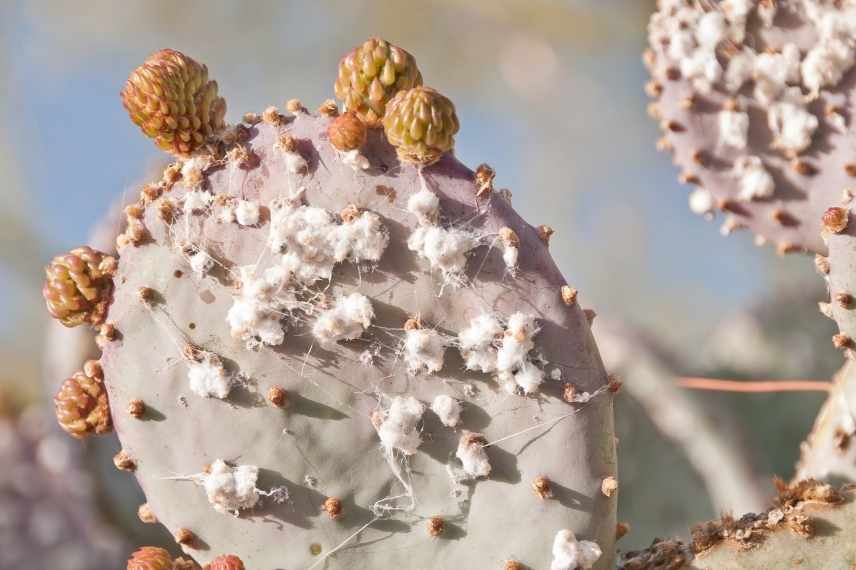
Severe mealybug infestation on a cactus
What to Do?
The first step is to inspect your cactus thoroughly. Mealybugs are quite visible, red spider mites are often detected by the webs they leave behind. As for root aphids, they hide in the smallest crevices of the root system and block nutrient absorption.
In case of mealybugs, remove them manually with a cotton swab dipped in 70°C alcohol, then treat with a solution of water, black soap, and vegetable oil. Red spider mites can be eliminated with a spray of non-calcareous water. To combat root aphids, repot the plant. And remember to isolate the cactus, as parasites spread easily.
- Subscribe!
- Contents































Comments